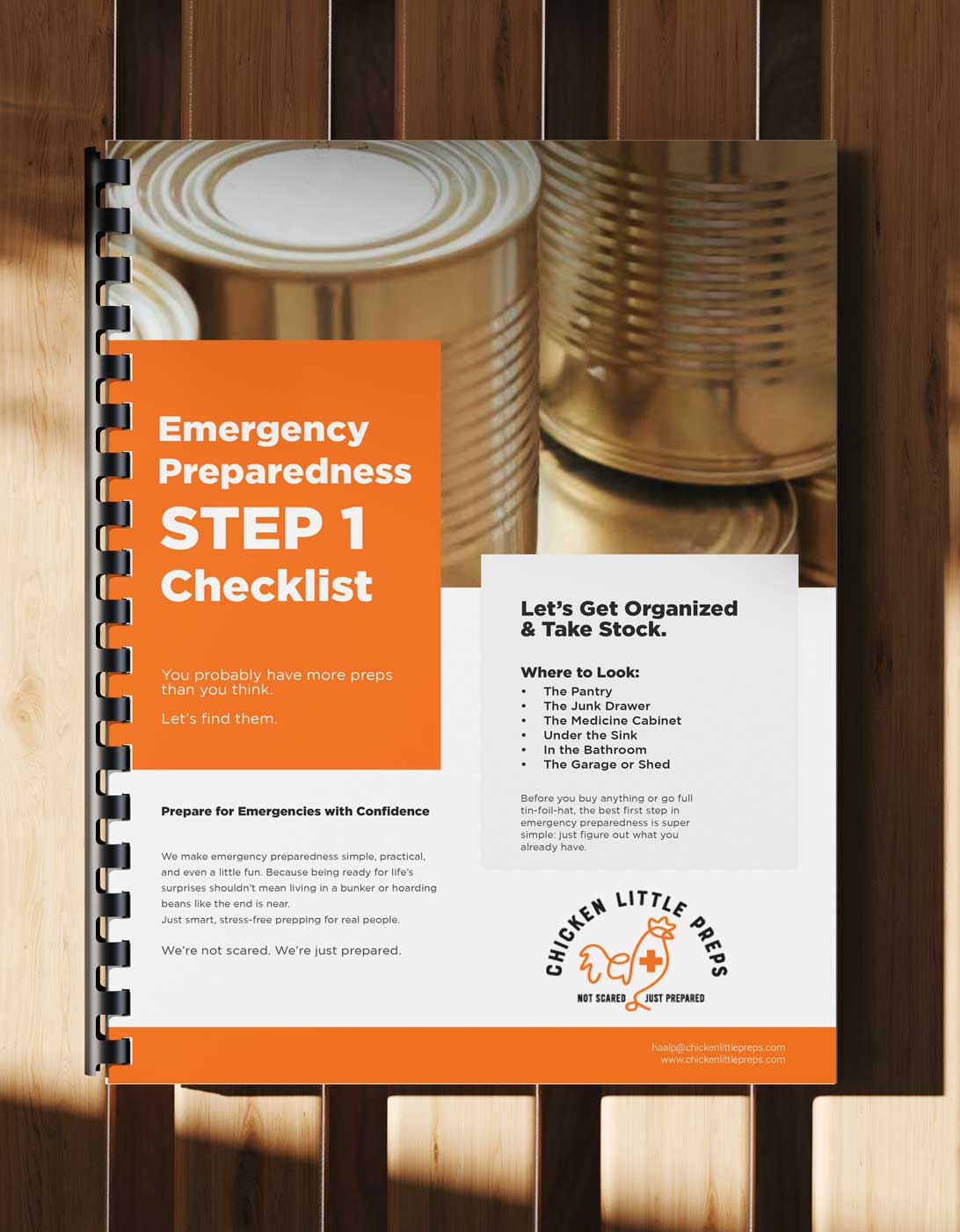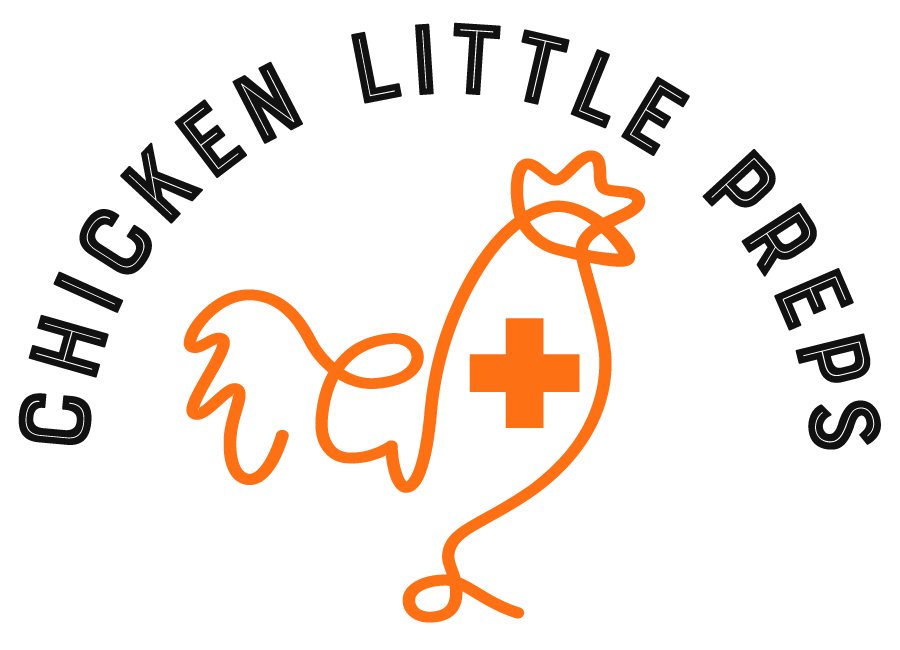Emergency Preparedness Step 7
Build a Bugout BagBecause you want to leave quickly, not frantically.

Build a Bugout Bag
Not every emergency means hunkering down at home with snacks and solar lights. Sometimes, the safest move is to leave—whether it’s a wildfire, hurricane, chemical spill, or just that feeling that you should be somewhere else. That’s where your bugout bag comes in.
Think of it as your 24–72 hour “go kit”—packed and ready to grab at a moment’s notice so you can leave fast and function until things calm down.
What Is a Bugout Bag (BOB), Really?
A bugout bag is not a tactical survival backpack stuffed with crossbows and freeze-dried squirrel stew.
It’s simply a pre-packed bag with the essentials you’d need if you had to evacuate quickly.
Depending on your needs, it might be a backpack, duffle, rolling suitcase—or even a bin in your car.
🧠 Cluck-Worthy Tip: Every family member (including kids and pets) should have their own tailored version.
What Goes in a Bugout Bag?
Let’s break it into categories. You’re aiming for portable, lightweight, and multi-use where possible.
The Essentials
- Copy of ID, insurance, and important documents (in waterproof pouch)
-
Emergency cash ($20s + small bills)
-
Phone charger and/or power bank
-
Flashlight or headlamp (plus batteries)
-
N95 masks or cloth masks
-
Multi-tool or small knife
-
Whistle
-
Lighter or waterproof matches
-
Local paper map, compass
Food & Water
- 2–3 liters of water and a filtration method (LifeStraw, Sawyer Mini)
-
Collapsible water bottle
- Electrolytes, Energy gels
-
High-calorie snacks (protein bars, trail mix, jerky, dried fruit)
-
1–2 lightweight shelf-stable meals (MREs, freeze-dried packs)
Hygiene & Health
-
Toothbrush, toothpaste, deodorant, wipes
-
Small towel or microfiber cloth
-
Hand sanitizer
-
Travel soap or no-rinse body wash
-
Menstrual supplies
-
First aid kit (see Step 5 for full list)
-
Medications (include 3-day supply if possible)
-
Sunscreen, bug spray
-
Glasses/contact lens supplies
Clothing & Comfort
-
1–2 sets of season-appropriate clothes
-
Undergarments and socks
-
Rain poncho or emergency blanket
-
Hat, gloves (seasonal)
-
Compact sleeping bag or bivy
-
Small comfort item (book, deck of cards, snacks)
Pet Bugout Bonus
-
Leash and collapsible bowl
-
Small bag of food
-
Copy of vet records
-
Waste bags
-
Comfort toy or blanket
Where Should I Keep It?
Keep your bugout bag:
-
By the door or closet nearest your exit
-
In your car trunk (if you’re often on the road)
-
At work, if you spend most of your day away from home
🧯 Bonus points for stashing a mini kit in your vehicle and keeping shoes + jacket nearby.
Don’t Set It and Forget It
Bugout bags aren’t a one-and-done prep. Review and rotate your contents:
-
Every 6 months
-
When seasons change
-
When kids outgrow things
-
After major life changes
Make a Simple Inventory
Keep it casual: just jot down what you have, what you need, and maybe a few “nice-to-haves” for later. You can use:
-
A notes app on your phone
-
A spreadsheet (if you’re fancy)
-
A notebook, clipboard, or printable Chicken Little checklist

Keep Calm & Grab the Bag
Building a bugout bag might feel intense—but it’s really just planning ahead for your own peace of mind.
If you ever need it, you’ll be grateful it’s there. And if you don’t? Hey, you’ve got a fully loaded weekend getaway bag.
Next Up: Step 8 – Comfort is a Prepper’s Best Friend
Because no one wants to weather the apocalypse without shampoo and snacks.
Starting a new habit is tough—but staying prepared doesn’t have to be.
Join a community that shares your goals, because together, we can prep for life - not just the next crisis. Subscribe to our email list for friendly reminders, smart tips, and friendly prepping advice.
